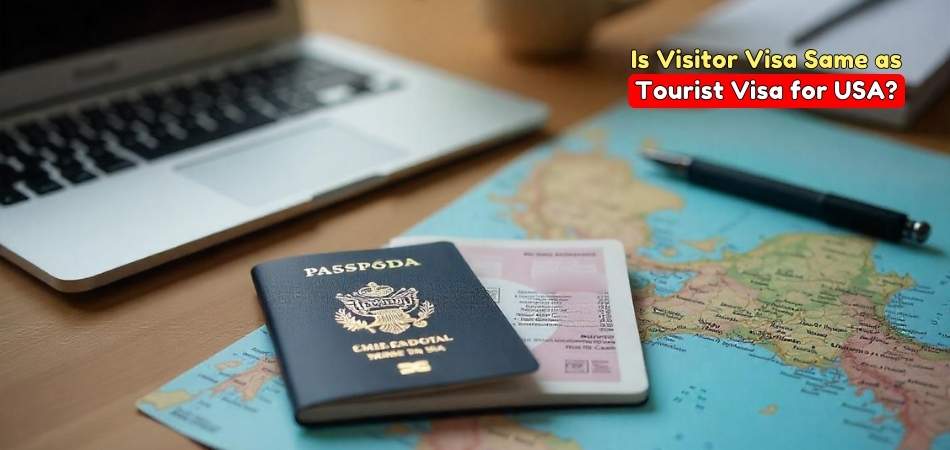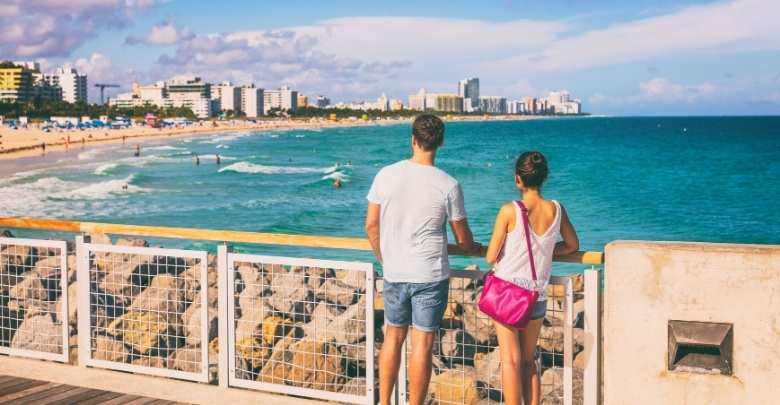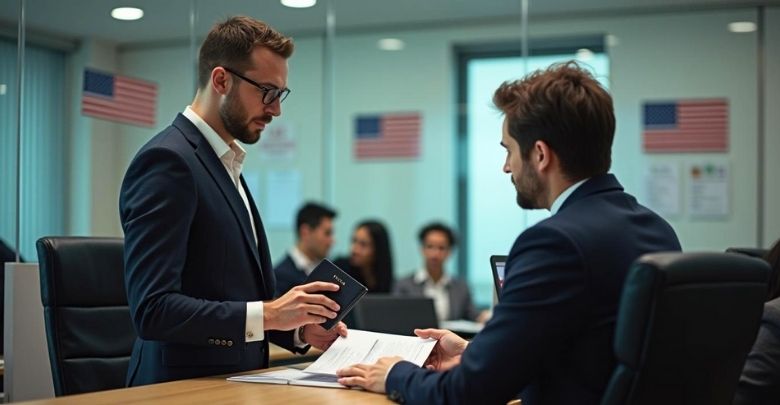When planning to visit the United States, familiarizing yourself with the different visa options is crucial. Among the most common visas are the visitor and tourist visas, both allowing foreign nationals to enter the country temporarily. However, many people often doubt: Is visitor visa same as tourist visa for USA?
No, a visitor visa and a tourist visa are not the same. Both are nonimmigrant visas, but they differ in purpose. A visitor visa is typically used for general visits, such as family visits or attending business events, while a tourist visa is specifically designed for individuals traveling for leisure or tourism.
If you would like to fully understand these differences and determine which visa is appropriate for your travel needs, please continue reading this article for a detailed comparison.
Is Visitor Visa Same as Tourist Visa for USA?
No, a visitor visa is not the same as a tourist visa. While both are nonimmigrant visas for temporary visits to the USA, they differ in purpose and eligibility. Here’s a detailed summary of their distinctions:
| Aspect | Visitor Visa | Tourist Visa |
| Purpose | For general visits, including business, family, or attending a conference in USA, the visitor visa serves a broader purpose than just tourism. | Specifically for leisure and tourism activities. |
| Visa Type | B-1 (Business) or B-2 (Tourism/Medical Treatment). | Primarily B-2. |
| Eligibility | Businesspersons, family visitors, or attendees of specific events. | Tourists traveling for sightseeing and leisure. |
| Duration of Stay | Based on the specific purpose, typically a few weeks to six months. | Usually six months or as determined by U.S. authorities. |
| Documentation Required | Invitation letters, business details, or event details. | Travel itinerary and proof of tourism plans. |
| Primary Activities | Business meetings, family visits, or medical consultations. | Sightseeing, vacations, or visiting tourist destinations. |
| Application Fee | Slightly higher due to additional requirements. | Standard fee for B-2 visa applicants. |
| Extension Possibility | Possible with valid reasons like extended business or medical needs. | Possible with valid reasons like health issues. |
| Dependents | Often applies for dependents accompanying the main applicant for business purposes. | Typically applies to family members traveling together. |
| Common Misunderstanding | Assumed to be the same as a tourist visa. | Often confused with visitor visa purposes. |
| Processing Time | Can vary depending on the purpose, such as business or attending a conference. | Generally faster as it is for tourism-related purposes. |
| Interview Requirement | May require an interview, especially for business visits or attending a conference in the USA. | An interview is usually required for first-time applicants. |
| Visa Sponsorship | May need a sponsor (like a company or family member) to provide necessary documentation. | Often requires proof of sufficient funds for the trip. |
| Travel Restrictions | Some restrictions on travel related to business activities. | More flexible, allowing free travel for tourism purposes. |
| Work Authorization | Does not permit employment in the U.S. | Does not allow work in the U.S. either. |
What Types of Visas Are Available for Entry Into the United States?
When traveling to the United States, you’ll need the appropriate visa depending on your purpose of visit. The U.S. offers a range of visa types, based on the individual’s needs. Whether you plan to visit for business, study, or tourism, being familiar with each visa category is essential. Here are some of the types of visas that can be used to enter the United States:
Student Visa (F-1/M-1)
Student visas are issued to those enrolled in U.S. schools or colleges. F-1 is for academic studies, while M-1 covers vocational training. Applicants must have an acceptance letter from a US institution. Proof of financial ability to cover expenses is also required.
Tourist Visa (B-2)
Tourist visas are ideal for leisure travel or vacations in the United States. They are for individuals visiting family or sightseeing. Applicants must provide proof of financial means to support their stay. This visa is also popular for exploring major U.S. attractions.
Visitor Visa (B-1/B-2)
The Visitor Visa is for short trips to the United States for business, tourism, or attending business events. For individuals planning to travel to the USA as tourists on a conference visa, the B-1/B-2 visitor visa is commonly used. You will need to provide documents like an invitation letter or conference registration to support your application.
Work Visa (H-1B, H-2B, L-1)
Work visas are issued to foreign nationals employed in specialized fields. H-1B is for skilled professionals, while H-2B is seasonal. L-1 visas are designed for company transfers within the same organization. Employers must sponsor the applicant and file the required petitions.
Exchange Visitor Visa (J-1)
This visa promotes cultural exchange through training, teaching, or research. It’s often used for internships, work-study, or AU pair programs. Applicants need sponsorship from an exchange organization. They may also need to return to their home country post-program.
Immigrant Visa (Permanent Residency)
Immigrant visas allow individuals to live permanently in the U.S. They include family-sponsored, employment-based, and diversity lottery visas. A green card is issued after approval, allowing indefinite stay. Applicants often undergo interviews and background checks.
Transit and Crew Visas (C-1/D)
Transit visas are for travelers passing through the U.S. en route to another country. Crew visas are for airline and ship crew members. These visas are short-term and specific to their purpose. Both require proof of onward travel arrangements.
Things You Can Do While on a Tourist Visa in the USA
Visiting the United States on a tourist visa offers countless opportunities to explore, learn, and enjoy. This visa allows you to experience the country’s rich culture, diverse scenery, and exciting attractions. Below are some of the best things you can do while on a tourist visa in the USA.
Explore Iconic Landmarks
Visit renowned sites like the Statue of Liberty, Golden Gate Bridge, and Mount Rushmore. Explore historical locations such as Independence Hall and the Alamo. National parks like Yellowstone and Grand Canyon offer outstanding scenery. These landmarks provide insight into America’s rich culture and history.
Enjoy City Life
Discover vibrant cityscapes in places like New York, Chicago, and Los Angeles. Experience cultural hubs filled with museums, theaters, and art galleries. Indulge in world-class dining, shopping, and entertainment options. Cities offer diverse activities for every kind of traveler.
Attend Festivals and Events
Participate in local festivals, parades, and cultural celebrations across the U.S. Seasonal events like Mardi Gras and Thanksgiving parades are must-sees. Music festivals, food fairs, and sporting events offer unique experiences. Check event calendars for activities happening during your visit.
Visit Friends and Family
Spend quality time reconnecting with loved ones in the United States. Attend family gatherings, weddings, or special occasions during your stay. Share meals and create lasting memories together. Visiting loved ones adds a personal touch to your trip.
Engage in Sightseeing Tours
Join guided tours for in-depth exploration of cities, landmarks, and hidden gems. Boat, bus, and walking tours are popular options. Tours often provide historical and cultural insights for visitors. It’s an easy way to cover many attractions in a short time.
Experience Outdoor Activities
Enjoy hiking, camping, and wildlife observation in national and state parks. Beaches offer opportunities for relaxation, surfing, and beachcombing. Try adventure activities like zip-lining, rafting, or skiing, depending on the season. Outdoor experiences showcase the natural beauty of the U.S.
Take Part in Cultural Experiences
Visit museums, theaters, and heritage sites to learn about American culture. Attend live performances like concerts and Broadway shows. Explore local cuisine by dining at diverse restaurants and food trucks. These activities provide a deeper knowledge of the country’s traditions.
Can You Switch From a Visitor Visa to a Tourist Visa in the USA?
No, you cannot directly switch from a visitor visa to a tourist visa while in the USA. Both visas fall under the B visa category, but they are issued based on the purpose of your visit. Changing your visa type requires leaving the USA and reapplying from your home country.
If your travel plans change, you may apply to extend your current visa stay. This requires submitting Form I-539 to the United States Citizenship and Immigration Services (USCIS). Approval depends on showing valid reasons and meeting the required conditions.
Make sure you adhere to the terms of your visa while in the USA. Misusing or attempting to alter visa status may lead to penalties. For any change, consulting an immigration attorney ensures proper guidance and compliance with regulations.
What Happens if You Violate the Terms of Your Visitor or Tourist Visa?
Violating the terms of your visitor or tourist visa can have serious consequences, including removal from the USA. Keeping track of possible outcomes will help you comply with immigration laws. Below are the key effects of violating visa terms.
Immediate Termination of Visa
Breaking visa terms may result in your visa being revoked by immigration authorities. You might be required to leave the USA immediately. Reentry could be denied even with a new application. Authorities closely monitor and enforce compliance with visa regulations.
Deportation from the United States
Violation can lead to deportation, affecting your travel history permanently. Deportation bans you from entering the USA for several years. This process involves legal proceedings and strict enforcement. Make sure you follow visa rules to avoid such penalties.
Ban on Future Visa Applications
A visa violation may result in disqualification from obtaining future visas. Immigration authorities flag your record, reducing approval chances. The ban duration varies depending on the severity of the violation. Compliance is key to maintaining a clean immigration history.
Fines and Legal Consequences
Some violations may incur financial penalties and legal issues. Overstaying your visa could lead to heavy fines under U.S. immigration law. Unauthorized work while on a tourist visa is illegal and punishable. Always adhere to the permitted activities on your visa.
Impact on Visa Reconsideration
Your violation history can negatively influence visa reconsideration for USA entry. Immigration officers consider past compliance during future applications. Violations may reduce trust in your intentions to follow rules. A clean record improves your chances of reentry.
Loss of Trust with U.S. Authorities
Frequent violations create distrust with immigration authorities, complicating future travel. Trust is a crucial factor for visa approvals and renewals. Following visa terms ensures smooth travel experiences and stronger relationships with immigration officials. Respecting rules benefits both travelers and authorities.
Is It Harder to Get a Visitor Visa Than a Tourist Visa?
Yes, getting a visitor visa can be harder than obtaining a tourist visa, depending on the purpose of your visit. A visitor visa often requires detailed documentation, such as business invitations or event confirmations. These requirements make the application process more complex compared to a tourist visa.
Tourist visas are primarily for leisure and sightseeing, requiring fewer documents for approval. Applicants usually need to show proof of financial ability and travel plans. This simpler process makes tourist visas more accessible for most travelers.
Visitor visa applications are reviewed more closely to ensure the applicant’s intent aligns with the visa’s purpose. Demonstrating ties to your home country is crucial for both visas. Proper preparation increases your chances of approval for either visa type.
Answers to Some Common Questions
Having a clear knowledge of the differences between a visitor visa and a tourist visa can be helpful when planning your trip. Here are some frequently asked questions to clarify your doubts about these visa types. Here are the details:
Can You Apply for Both a Visitor Visa and a Tourist Visa at the Same Time?
No, you cannot apply for both simultaneously, as they are issued based on the specific purpose of your visit. Applying for both may cause confusion and delay in processing, so choose the one that aligns with your travel purpose.
What Should You Do if Your Visa Application Gets Rejected?
If your visa application is denied, review the reasons for rejection provided by the consulate. Address the issues and reapply with updated information, ensuring all requirements are met for a better chance of approval.
Is There an Age Limit for Applying for a Visitor or Tourist Visa?
No, there is no specific age limit for either visa type. Minors must have parental consent and additional documents to apply. These may include financial proof from parents or legal guardians. Proper documentation ensures smooth processing for applicants of all ages.
Can You Change the Purpose of Your Visit After Entering the USA?
No, you cannot change the purpose of your visit once you’re in the USA. Immigration laws require you to leave and reapply for a new visa matching your new plans. Attempting to switch purposes may violate visa terms. Staying transparent with authorities is critical.
Is Travel Insurance Mandatory for Visitor or Tourist Visa Holders?
Travel insurance is not mandatory but highly recommended for all visa holders. It protects against medical emergencies, trip cancellations, or unforeseen events. Insurance offers financial security and peace of mind during your stay. Choosing a comprehensive plan is always a wise decision.
How Does the Interview Process Differ for Visitor and Tourist Visas?
Visitor visa interviews focus on business intent, such as meeting clients or attending events. Tourist visa interviews emphasize leisure plans and financial capacity. Both require proof of ties to your home country. Honest answers and clear intent are key to approval.
Final Thoughts
Planning a trip to the USA requires understanding the differences between a visitor visa and a tourist visa. While both visas are nonimmigrant types, their purposes and requirements differ. If you are still wondering: Is visitor visa same as tourist visa for USA? The answer is no. There are differences in terms of eligibility, activities allowed, and documentation required for each.
A visitor visa typically covers business and family visits, while a tourist visa focuses on leisure and sightseeing. Knowing these distinctions helps ensure compliance with U.S. immigration laws and a smoother travel experience. For a successful application, align your visa choice with the purpose of your visit and provide the required documents accurately.








